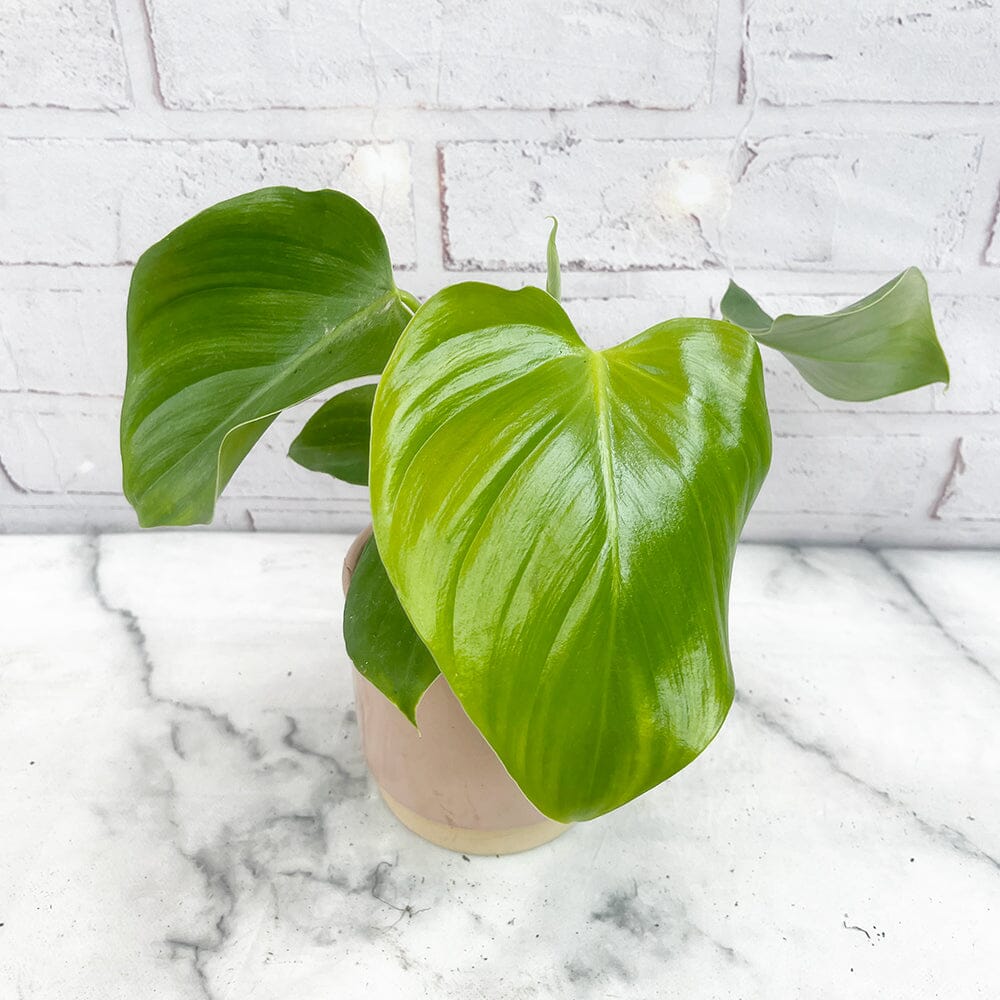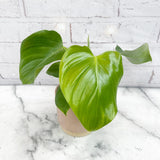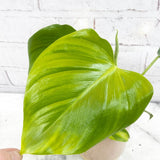15 - 20cm Philodendron Microstictum House Plant in 10cm Pot
Philodendron Microstictum, sometimes known as the "Spotted Philodendron," is a relatively rare species prized by houseplant enthusiasts for its beautiful foliage. This tropical evergreen species originates from Ecuador and Peru, where it grows as an epiphyte in rainforests. Its leaves are oblong with rounded ends, glossy, and display a rich, deep green color. The plant gets its common name from the tiny speckles that cover the leaf surface, giving it a unique and attractive appearance.
Here's a basic guide on how to care for your Philodendron microstictum:
Light: This plant prefers bright, indirect light. Direct sunlight can cause the leaves to burn, while too little light can lead to leggy growth and a reduction in leaf variegation.
Water: Water your Philodendron microstictum when the top 1-2 inches of soil feel dry to the touch. Overwatering can lead to root rot, a common problem with Philodendron if left in waterlogged soil.
Humidity: As a tropical plant, Philodendron microstictum prefers higher humidity levels. You can increase humidity by placing the plant on a pebble tray filled with water, using a humidifier, or misting the plant regularly.
Temperature: The ideal temperature range is 65-80°F (18-27°C). Keep it away from drafts, air conditioning vents, and windows that get cold in the winter.
Soil: A well-draining, peat-based potting mix is suitable for this plant. You can add perlite or coarse sand to improve drainage.
Fertilizer: During the growing season (spring and summer), feed your plant every two weeks with a balanced houseplant fertilizer diluted to half the recommended strength. Reduce fertilizing in the winter months.
Repotting: Philodendron microstictum doesn't require frequent repotting and can be repotted every 2-3 years or when it becomes root-bound. Spring is the best time for repotting.
Pruning: Prune any yellowing or dead leaves to maintain the plant's health and appearance. Regular pruning can also help control the size and shape of the plant.
Propagation: This plant can be propagated by stem cuttings. Make sure each cutting includes at least one node, and place it in water or moist soil until roots develop.
Please note that Philodendron, including microstictum, is known to be toxic if ingested, so it should be kept out of the reach of pets and children.
With the right care, your Philodendron microstictum can be a beautiful addition to your indoor plant collection. Its unique leaf pattern and easy-going nature make it a great choice for both new and experienced plant owners.
Check out our YouTube video to see exactly how we pack for safe delivery.
- Plants are supplied in plastic nursery pots unless stated in the product title.
- Plants are not for consumption unless stated as edible.
- Plant heights can fluctuate +/- 10%.
- Our plants are kept at our tropical nursery in Yorkshire where we maintain an average temperature of 18c.
































